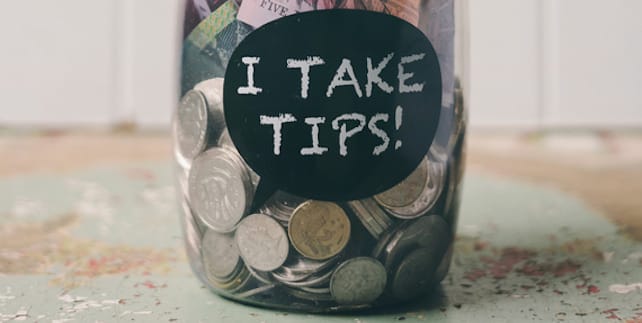Part 1 – Financial Protection
“You only have $10,000 of life insurance?”
First off, let’s get something clear. I’m not the type of financial advisor that goes around asking people how much life insurance they have, especially at a wedding reception. But, after cutting a rug with our wives the other husband and I sat down for a break and somehow the conversation shifted towards finances. He was the sole breadwinner of his family while his wife took on the task of taking care of their two kids.
So when I learned that he only had $10,000 of life insurance that was through his employer, I was shocked. Heck, I was mortified. I knew they had a big house, camper, and I’m sure a good chunk of other debts.
How in the world would his wife survive if something happened to him?
I wanted to ask him if he had disability insurance or how his emergency fund was doing, but I thought best to stop there.
Planning for the Unexpected
Financial planning is important business, and it’s not as difficult as many think. Because of its daunting perception, many people put off essential financial planning which results in being inadequately prepared and protected.
In the case of the man who I met at the wedding, not enough life insurance was one major financial planning misstep. Had the conversation gone longer, I’m sure I would have learned it wasn’t the only one.
By paying a little attention and working to put a plan into place, you can avoid the massive amount of time – and stress – required to dig yourself or your family out of debt.
The last thing I’d want to see is you financially suffer when the suffering could have been easily avoided. There are two financial planning must-haves that are foundational to protecting wealth: insurance and an emergency fund.
Insurance
The goal of insurance, whether it be life insurance or disability income insurance, is to move risk away from you toward a financial institution – for a fee, of course. While you may dread paying for insurance knowing that you probably won’t use it, just imagine the consequences of not having it in a time of need.
Not all insurance is created equal, though. Some types are more important than others. Still, it’s good to have adequate coverage.
Here are two types of insurance many people don’t – but should – have.
Term Life Insurance
While there are many different types of life insurance, there’s no question that term life insurance is the least expensive way to go and usually the best option for younger couples.
Term life insurance protects your loved ones should you pass away suddenly and is characterized by its set term length – typically 10, 15, 20 or 30 years.
In my household, I have four loved ones: my wife and my three boys. As the primary breadwinner, I don’t want my wife stressing about the finances if something happens to me.
Those who have boys understand how much they eat!
How much term life insurance do you really need? Well, that depends. There are many factors that should go into the calculation such as:
- How much income you make
- The amount of expenses you have
- How much debt you have
A good rule of thumb is that you need 10 times your annual income. But also keep in mind that there are a few other factors you might want to consider such as:
- How much money would be immediately needed upon death (for example, for a funeral or to pay off personal debts like a credit card.
- Life-changing circumstances that occur as the result of death (for example, having to go back to work or downsize your home to reduce living expenses)
It’s important to remember that life insurance needs can change over time, and you should revisit your policy value during major life milestones. I’ve personally increased the amount of life insurance I have on three separate occasions: when I was married, after our first son was born, after our second son was born.
If you’re wondering why I didn’t increase after my 3rd son was born, it’s because I purchased a much larger policy since we had already planned to have a 3rd child.
The first place to start is to understand your life insurance needs. Try out Haven Life’s life insurance calculator. There you can receive a personalized estimate that suits your financial situation and you can easily apply online for dependable coverage.
Disability Income Insurance
Okay, so now you know about life insurance – but what about disability income insurance?
Disability insurance is a vital type of insurance, as it provides coverage should you become unable to work due to sickness or injury. Most of assume we’ll be of able body and mind our entire lives and therefore, can work full-time until we retire. Unfortunately, this isn’t always the case.
Remember those three boys and my wife I mentioned earlier? They were definitely on my mind when I purchased my disability policy.
Disabilities can be very costly – that’s why this insurance rocks. It can help you cover your ongoing expenses for several years or even your entire working life depending on how the policy is structured (although disability plans don’t cover 100% of your lost income).
Like anything, make sure to do your homework before you buy a disability policy. I personally sought quotes from 3 separate companies to make sure I purchased the best policy for my family and myself.
Adding these kinds of insurance to your financial plan should give you a solid shield of protection that will help you fend off large-scale financial emergencies.
Emergency Funds
While life insurance and disability insurance are meant to protect large-scale financial emergencies, you need a plan for smaller financial situations that may arise.
One critical piece of my financial plan is to maintain an emergency fund for unexpected expenses. If I could force you to do anything, it would be setting aside money each month for a robust emergency fund.
It’s that important.
An emergency fund can help you pay for unexpected expenses such as medical bill copays, a broken car radiator, or the loss of a job. Any of these situations could result in thousands of dollars in unexpected losses, and you want to be prepared with a robust emergency savings to prevent yourself and your family from going into debt.
The other great thing about emergency funds is that they can help keep you out of debt. Instead of paying for an emergency with credit cards (and not being able to pay them off every month), you can simply dip into your emergency fund to cover the expense at 0% interest for life.
While many financial experts recommend saving between three and six month’s worth of expenses in an emergency fund, I recommend a little more: eight months of expenses. Some financial experts recommend even more: 12 months of expenses.
Generally speaking, if you have volatile income working for commission only or there’s only one breadwinner in your household, you’re going to want to land on the higher side of that scale. If your income is consistent and you have two breadwinners in your family, you may want to opt for less money in the emergency fund so that you can put the extra money toward other goals like paying off debt or saving for your children’s college education.
If your savings account looks more pathetic than the one you had as child, don’t fret. Everyone starts somewhere.
Prior to getting married, my wife and I had zero savings. I was living paycheck to paycheck and any emergency would have been immediately added to my credit card. Our first goal after getting married was to reach the $1,000 savings level. It took us a few months but we finally reached it.
Our next goal was $2,000, which we reached in about half the time. As our income has grown over the years, so has our emergency fund. Personally, we’re most comfortable at the 12-month level, but it took us several years to get there. My advice for all couples looking to create an emergency fund is to start by setting a goal of say, $1,000, and giving yourself a reasonable deadline to reach it.
There are some great places you can put your emergency fund. I recommend a high-yield online savings account like Capital One 360. These accounts are great for emergency funds because they are liquid (meaning you can pull out the money at any time should you need it for an emergency) but they also get you better interest rates than you would find when looking at most brick-and-mortar bank and credit union savings accounts.
Insurance and Emergency Funds Work Together
Insurance and emergency funds go hand in hand. How so? Let me explain.
Remember that emergency funds can help cover any expense that isn’t covered by your insurance policies. But there’s another way they complement one another, too. When you have an emergency fund, you can afford to take more risk and lower your insurance coverage and therefore your premiums as a result.
Do me a favor: Go out and get insurance you’re lacking and start building your emergency fund. You’ll find that really, you’re doing yourself a favor by having these complementary and critical forms of coverage. You’ll protect more of your money and as a result will be able to invest more.
Being prepared is just half the battle; sound financial planning calls for a growth strategy as well. Read Part 2 – Investing Your First $2,000.





